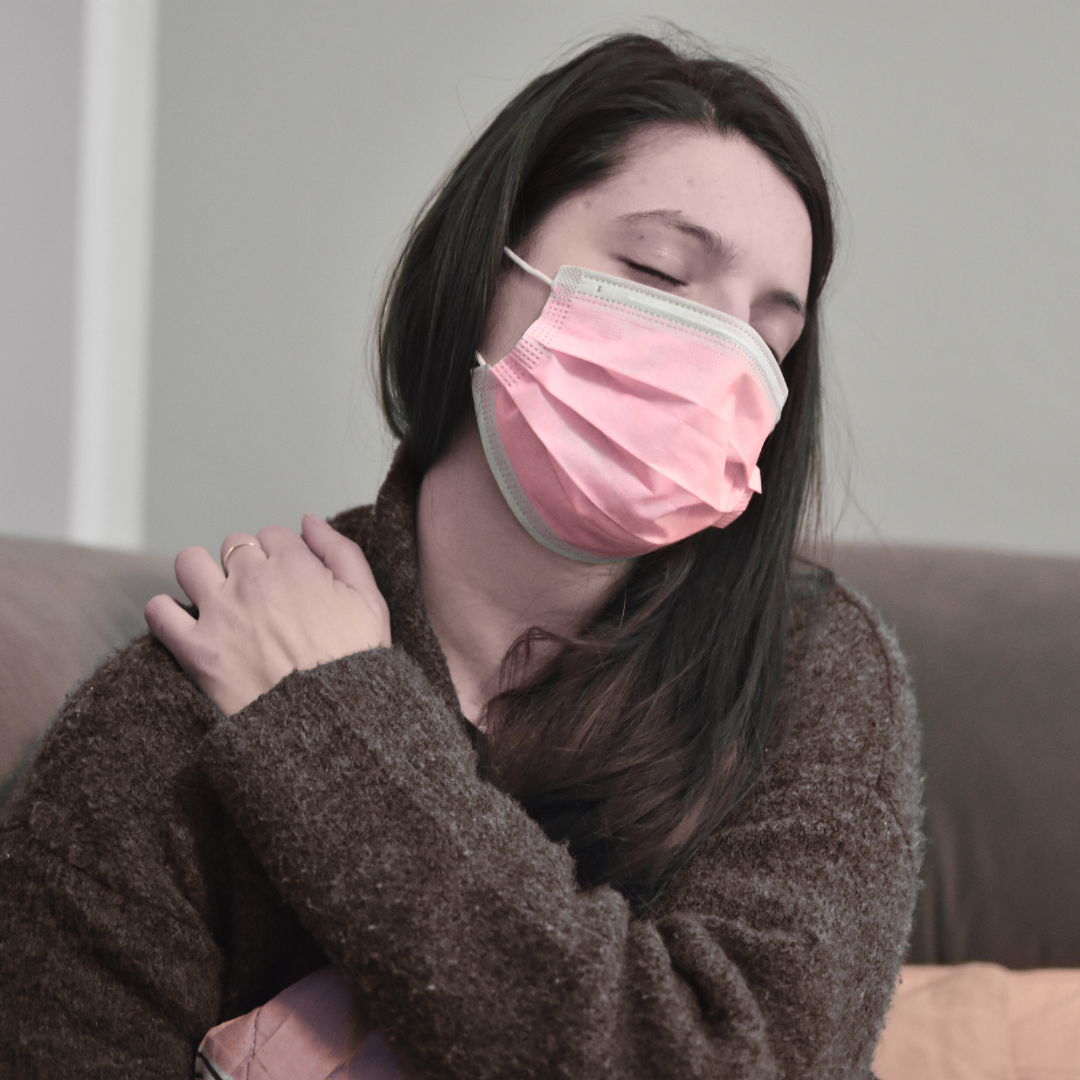How Mast Cell Activation Impacts Long COVID Recovery
Feeling Stuck in Long COVID Recovery? Mast Cells Could Be Part of the Puzzle
If you’ve been dealing with Long COVID and your recovery feels like two steps forward, three steps back, fatigue, brain fog, food reactions, or flare-ups that seem to come from nowhere—you are not alone. Many women I work with share that their symptoms are unpredictable and sometimes dismissed by others, which can be discouraging and isolating. These flare-ups aren’t just “in your head”, they are physical, measurable reactions happening in the body.
One possible piece of the puzzle is mast cell activation, sometimes called mast cell activation syndrome (MCAS), a condition where a part of your immune system stays overactive long after the initial illness has passed. More research is showing that mast cell activation in Long COVID may be contributing to symptoms like fatigue, dizziness, histamine reactions, and brain fog, and it may be one of the reasons recovery can feel inconsistent.
Mast cell activation in post-viral syndromes like Long COVID is often under-recognized, but it’s increasingly discussed among both researchers and functional medicine practitioners. Understanding how these cells behave, and how they can be calmed, can give you new strategies for healing.
What Is Mast Cell Activation?
Mast cells are specialized immune cells that act as your body’s rapid-response team. They’re stationed in tissues that come into contact with the outside world, your skin, gut lining, respiratory tract, and even around nerves and blood vessels. Their job is to respond quickly to injury, infection, or allergens by releasing chemical messengers, including histamine, cytokines, prostaglandins, and tryptase.
When functioning normally, mast cells help protect you from infections and support wound healing. But in mast cell activation syndrome, they release these chemical messengers too frequently or in larger amounts than needed, creating widespread inflammation. This chronic activation can affect many different systems in the body at the same time.
In the context of Long COVID, this overactivity can mean your immune system remains in “high alert” mode even months after the initial infection. This can lead to repeated histamine reactions, ongoing inflammation, and increased sensitivity to triggers like heat, stress, and certain foods.
Mast cell overactivation isn’t always obvious. In some people, the symptoms may look like unrelated conditions, gut issues, skin rashes, heart palpitations, or sudden fatigue, making it easy to miss unless you know what to look for.
Common Long COVID MCAS Symptoms
Symptoms of mast cell activation in Long COVID often overlap with other post-viral issues, which is why they can be so frustrating to pin down. They may appear in cycles or flare after certain triggers, making your recovery feel unpredictable.
Some of the most common long COVID MCAS symptoms include:
Chronic fatigue that worsens after activity or comes on unexpectedly
Brain fog and memory lapses that make it hard to concentrate or recall information
Dizziness, lightheadedness, or POTS-like symptoms when standing
Heart palpitations or rapid heartbeat without exertion
Skin reactions such as flushing, itching, or hives without an obvious cause
Food sensitivities or reactions to histamine-rich foods like aged cheese, wine, or smoked meats
Chemical sensitivities—strong smells, perfumes, or cleaning products trigger symptoms
Digestive issues like bloating, cramping, diarrhea, or nausea
These symptoms can impact daily life in a major way—making it harder to work, socialize, or even do light physical activity without risking a flare. For many women, the unpredictability is one of the most emotionally exhausting aspects.
How COVID Can Trigger Mast Cell Activation
The link between COVID and mast cell activation is becoming clearer as research grows. COVID can disrupt immune system balance, damage tissue, and inflame the nervous system, especially the autonomic nervous system, which regulates things like heart rate, digestion, and blood pressure.
This inflammation can “prime” mast cells to stay on high alert even after the infection clears. Because mast cells are found in so many parts of the body, their overactivation can create widespread symptoms:
In the brain, mast cell mediators can disrupt the blood–brain barrier, contributing to brain fog, headaches, and cognitive changes.
In the gut, mast cell activation can increase intestinal permeability (“leaky gut”), cause bloating, and worsen food sensitivities.
In the cardiovascular system, they can influence blood vessel dilation and nerve sensitivity, contributing to POTS-like symptoms.
In the skin, mast cells can release histamine and prostaglandins, leading to flushing, itching, and rashes.
Many patients with mast cell activation post COVID notice that their symptoms span multiple systems—this is a key sign that MCAS might be involved. By addressing mast cell overactivity, you may also calm down inflammation in multiple areas at once, helping your recovery feel more stable.
How Mast Cell Activation Slows Recovery
Ongoing mast cell activation in Long COVID doesn’t just cause uncomfortable symptoms, it can actually keep your body in a cycle that slows down healing. When mast cells are constantly releasing histamine and other inflammatory chemicals, your immune system stays in “defense mode.”
This chronic state of reactivity can:
Increase inflammation in the brain and body
Disrupt deep, restorative sleep
Worsen stress tolerance, making you more reactive to emotional and physical triggers
Limit your ability to tolerate exercise or activity without crashing
Even with rest, pacing, and healthy lifestyle habits, you may find yourself repeatedly hitting an invisible wall. For many women, this is why their recovery from Long COVID feels unpredictable, some days are good, but even minor triggers can lead to setbacks that take days or weeks to resolve.
“Your symptoms are not random—they are your body’s way of asking for care, not control.”
Signs MCAS Might Be Affecting Your Long COVID
If you suspect mast cell activation post COVID, tracking your symptoms and identifying patterns can be powerful. Some signs to watch for include:
Flares that happen after heat exposure, stress, or physical exertion
Reactions to histamine-rich foods such as wine, aged cheese, cured meats, or fermented products
Rashes, flushing, or itching without an obvious cause
Sensory sensitivities, bright lights, loud sounds, or even touch feel overwhelming
Feeling noticeably better after taking an over-the-counter antihistamine
When several of these signs occur together, especially if they come in cycles, it can be a clue that mast cell involvement is contributing to your Long COVID MCAS symptoms.
MCAS & Long COVID Recovery Strategies
While there’s no one-size-fits-all cure for MCAS, many people find relief using a multi-layered approach that addresses both the mast cells themselves and the triggers that activate them.
1. Gentle Histamine Reduction
Try a low-histamine diet for a short period (often 2–4 weeks) to identify potential food triggers.
Focus on fresh, unprocessed foods and avoid leftovers that can build up histamine.
2. Mast Cell Stabilizers
Natural supplements like quercetin, luteolin, and vitamin C have been studied for their ability to reduce mast cell reactivity.
Always start slowly and check with a practitioner familiar with MCAS long COVID treatment to find the right form and dosage.
3. Nervous System Regulation
Chronic stress can be a major mast cell trigger.
Gentle nervous system support—breathwork, somatic movement, and consistent sleep—can reduce stress signals that drive histamine release.
This is especially helpful if you also have POTS or other signs of dysautonomia alongside MCAS.
4. Environmental Modifications
Reduce daily triggers by avoiding perfumes, harsh cleaning products, and other strong-smelling chemicals.
Manage your indoor temperature to prevent heat-triggered flares.
5. Targeted Supplements (with practitioner guidance)
Magnesium glycinate for muscle and nervous system relaxation.
Omega-3 fatty acids for inflammation balance.
DAO enzymes to help break down histamine from food, especially if you have gut-related symptoms.
For many people, combining these strategies leads to fewer flares, more consistent energy, and improved tolerance for activity, making it easier to make steady progress in mast cell activation long COVID recovery.
Mast cell activation in Long COVID can impact nearly every part of your recovery journey. Because mast cells are present in the skin, gut, lungs, heart, and nervous system, their overactivation can create symptoms that feel scattered or unrelated, but in reality, they share a common root cause.
When mast cells are overactive, they can:
Keep your body locked in an inflammatory loop
Increase histamine-related symptoms like brain fog, skin flushing, or digestive discomfort
Reduce your tolerance for exercise, heat, and even certain foods
Trigger sensory sensitivities that make everyday environments overwhelming
The encouraging news is that mast cells can be calmed. By using a combination of low-histamine nutrition, natural mast cell stabilizers, nervous system regulation tools, and environmental adjustments, many people notice fewer flare-ups, steadier energy, and better resilience.
If you’re feeling frustrated that your recovery hasn’t been linear or that you “crash” after making progress, know that you are not broken—your body is simply still in defense mode. Recognizing the role of mast cell activation post COVID is the first step to creating a more stable, supportive healing plan.
FAQ – Mast Cell Activation & Long COVID
Q: How do I know if I have mast cell activation from COVID?
A: Look for symptom patterns, fatigue, brain fog, skin reactions, gut issues—that flare in response to triggers like heat, stress, or histamine-rich foods. Keeping a symptom journal can help identify trends and share them with your healthcare provider.
Q: Can mast cell activation go away after COVID?
A: For some, mast cell activation long COVID symptoms improve with targeted support and time. For others, managing MCAS is a longer-term process, but symptoms often become more stable with the right strategies.
Q: Are there natural ways to calm mast cells?
A: Yes—many people use quercetin, luteolin, vitamin C, magnesium, omega-3 fatty acids, a low-histamine diet, and gentle nervous system support to help reduce overactivity. Always discuss new supplements with a practitioner who understands MCAS long COVID treatment.
Q: Can nervous system regulation help mast cell activation?
A: Absolutely. The nervous system and immune system are deeply connected. Reducing stress signals through breathwork, mindfulness, and somatic practices can lower mast cell triggers and improve overall recovery.
If your Long COVID recovery feels unpredictable, stuck, or full of strange flare-ups, mast cell activation could be part of the reason. These immune cells affect every system they touch. When dysregulated, they can make recovery harder, but when supported, they can be calmed.
You are not imagining your symptoms. They are real, they follow a pattern, and they are manageable with the right tools.
For practical, research-backed strategies, join our free community The Garden for weekly office hours and real-time support, or explore our full Mast Cell Activation and Long COVID resource library. You’ll find guides on histamine management, nervous system regulation, and post-viral recovery strategies that are gentle, sustainable, and science-backed.
Further Reading:





































